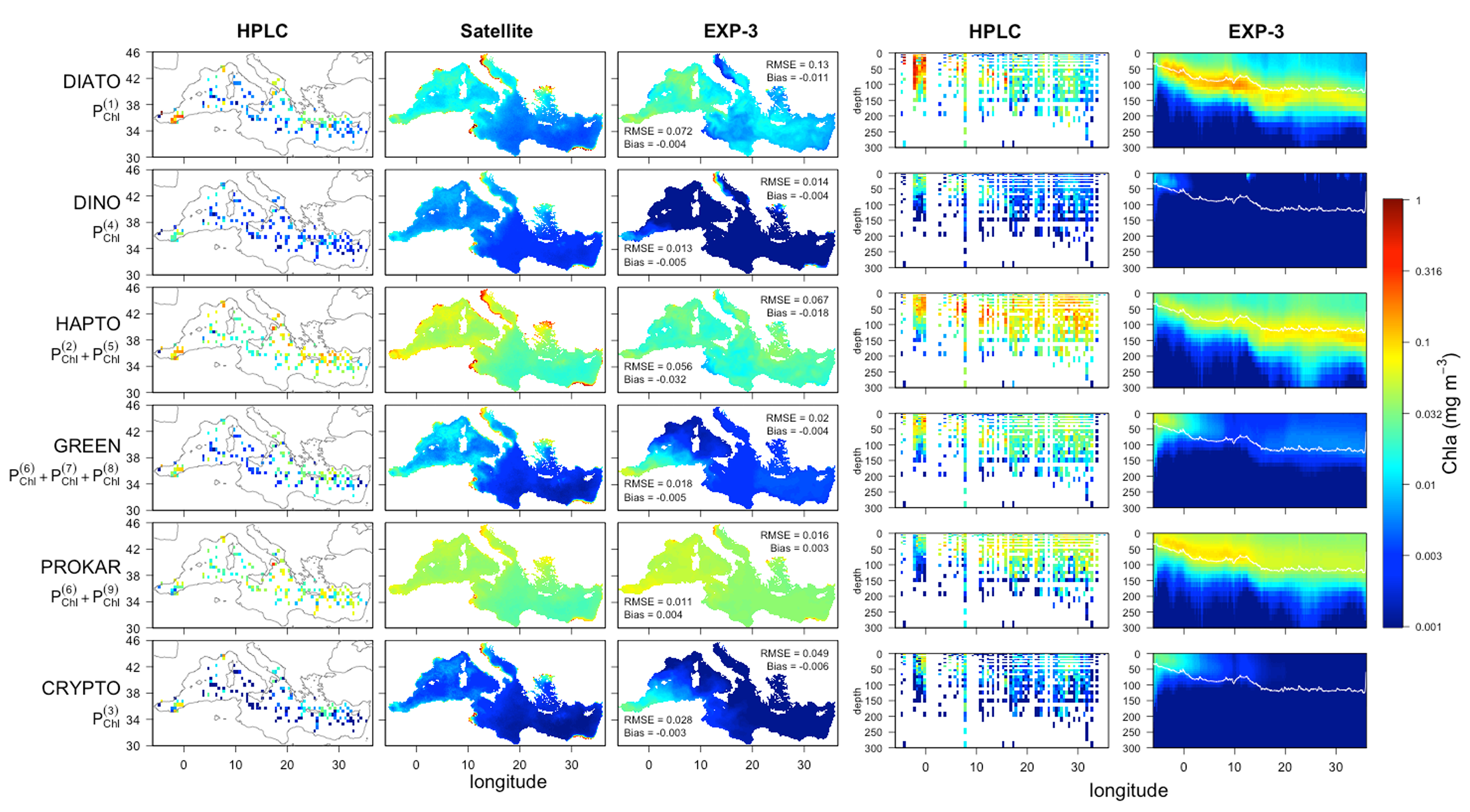A new paper showing how chromatic adaptation shapes the biogeography of phytoplankton functional types in the Mediterranean Sea has been recently published in Progress in Oceanography. The study integrates several novel elements in the Biogeochemical Flux Model (BFM): it includes a bio-optical component that simulates how the different wavelengths of light propagate through the water column, represents nine optically different phytoplankton functional types (PFTs) and explores how the chromatic characteristics of the PFTs allow them to use the available wavelengths of light. Niche differentiation driven by chromatic adaptation has already been reported among picophytoplankton, but this study is the first one to extend the analysis to the whole phytoplankton community of the Mediterranean Sea. Our modelling results, which were corroborated by extensive observational in situ and satellite datasets, show that the availability of spectral light habitats strongly shapes the distribution of phytoplankton groups in the Mediterranean Sea. Therefore, the characterization of PFTs through chromatic traits along with other functional characteristics, can be promising to simulate PFTs distribution in the Mediterranean Sea. An important implication of these results is that the simulation of the spectral light niches available in the basin through coupled biochemical and optical models, can increase the number of phytoplankton types that can be discriminated and fruitfully simulated by the BFM model providing insights on the phytoplankton community diversity. This study has been performed thanks to the support from Marine Copernicus Service and the H2020 SEAMLESS project and to PRACE-Italy resources. The manuscript is available at the following link https://authors.elsevier.com/a/1evPqI7ECuHPx The figure shows the comparison between in situ HPLC and satellite observations and the model simulation (EXP-3) for 6 phytoplankton functional types.
